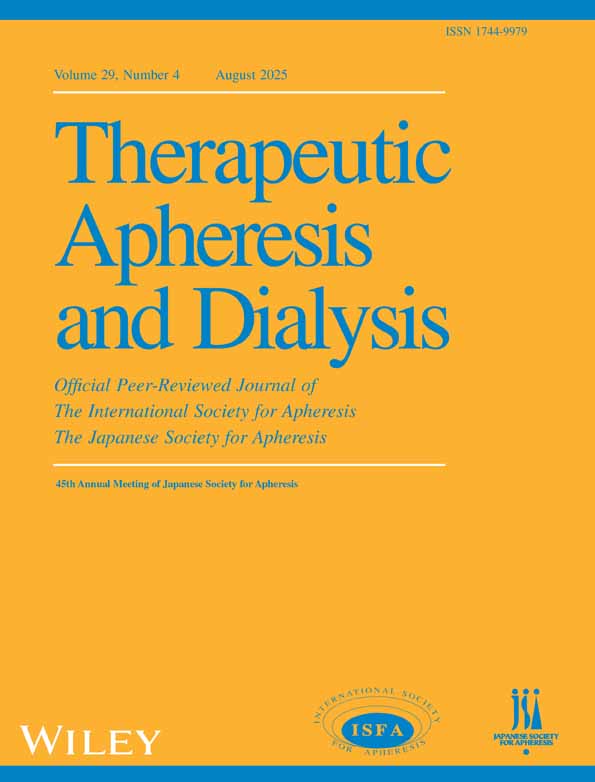Plasma Exchange for the Treatment of Human T-Cell Lymphotropic Virus Type 1 Associated Myelopathy
Abstract
Abstract: A 55-year-old man was admitted to our hospital because of myelopathy. He had a history of chronic renal failure due to polycystic kidney disease at the age of 39, being treated by hemodialysis for 9 years with several blood transfusions for the treatment of renal anemia. After cadaver renal transplantation at the age of 48, he discontinued hemodialysis. At 50 years of age, he had pulmonary tuberculosis and tuberculous arthritis of the left elbow joint. He has experienced difficulty in walking since he was 48 years old, with mild dysuria. Gait disturbance gradually aggravated after that, and urinary retention was observed. When he was 55 years old, being human T-cell lymphotropic virus type-1 (HTLV-1)-positive in the serum and cerebrospinal fluid, he was diagnosed as having HTLV-1-associated myelopathy (HAM). As active steroid therapy was unapplicable because of the history of pulmonary tuberculosis and immunosuppression for transplanted kidney, a series of plasma exchanges (PE) was performed with fresh frozen plasma as a replacement fluid. After PE, dyskinesia of the left leg and dysuria subjectively and objectively improved. These results suggest that PE seems to be one of the therapeutic tools for the treatment of HAM.




